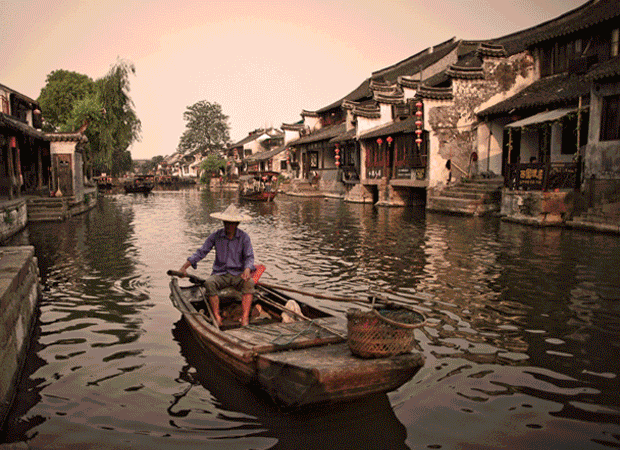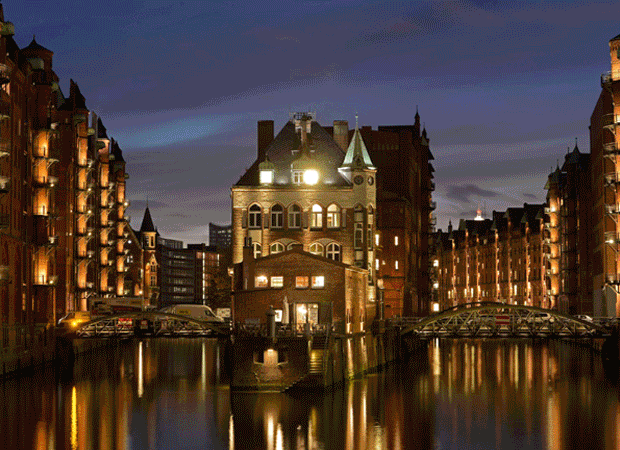|
When you ask someone to name a canal city, the first
name that comes to mind is Venice. But did you know that there are
dozens of other beautiful canal cities across the globe? This 10 list is
about these magical canal towns. Canals come in various sizes, from
waterways that connect oceans to small waterways through lovely cities.
These towns are often recognized with the name of Venice and people are
used to compare with this the most famous canal city. But these cities
also have their own charm and history and definitely worth a holiday
season to spend.
|
 |
This year it is all about Amsterdam’s canals, as the Dutch capital
celebrates 400 years of its iconic waterways. Constructed during the
Dutch Golden Age, in the 17th century, the city’s canal system is the
successful outcome of extensive city planning and takes in more than 60
miles of waterways, 90 islands and 1,500 bridges. Originally conceived
as four half-circle-shaped canals which come together in the IJ Bay,
three canals were intended for residential development and a fourth was
to be for water management and defence. These days the grachtengordel
(canal belt) forms the vibrant heart of the city, and is lined with
shops, restaurants, museums and hotels and cozy cafes.
|
 |
|
A city frozen in time, Bruges is
Belgium’s biggest tourist attraction with good reason. Pretty town
squares, traditional Flemish gabled architecture, winding medieval
passages and picturesque canals all add to its appeal, and despite the
droves of day trippers it’s very much worth a visit. Stay overnight to
truly experience this dreamy city once the hordes have left. On the
other hand, if you enjoy the excitement of big crowds the annual canal-centred
Reiefeest, which sees the romantic waterways explode with scores of
festivities, shouldn’t be missed.
|
 |
|
With a history that dates back over 2,000
years, the ancient town of Xitang, along with its water town neighbours,
has no shortage of heritage. However, unlike many other water towns,
which are filled with tacky tourist shops and busloads of day trippers,
Xitang has managed to stay true to its roots. It has also remained
largely unchanged through the millennia, with very old, picturesque
houses backing out on one of the nine rivers that crisscross it, and
historic bridges arching over the waterways which serve as the main
thoroughfares through the town to this day.
|
 |
Undoubtedly the most famous of all the canal cities, Venice oozes charm
and romance with gondoliers gliding silently under bridges that have
been eternalised by Renaissance painters. The city is built on a group
of 118 small islands which are separated by canals and linked by
bridges. During the day the city gets overrun by day trippers, but once
they leave in the afternoon the city readily reveals its age-old allure.
Whether it is the impressive drama of the Grand Canal palaces that
appeals to you, the quirky calli (alleyways) or the impressive scale of
Piazza San Marco, it is easy to understand why people fall head over
heels in love with Venice.
|
 |
In Stockholm you’re never far from a striking waterside walkway or
pretty bridge, and one of the best ways to see the city is aboard one of
a number of sightseeing boats which ply the waterways. Built on 14
islands which separate the Baltic Sea from Lake Mälaren, the Swedish
capital has rightfully been nicknamed the “Venice of the North”. Take
your canal experience up a level and travel along “Sweden’s Blue
Ribbon”, which connects Stockholm on the east coast with Gothenburg on
the west coast, through a network of canals, 58 locks and 47 bridges.
|
 |
Built by Peter the Great on swampland in the early 18th century, it is
no coincidence that Russia’s “window to the west” has a much more
European flavour than the country's capital Moscow. Its original layout
was devised by an Italian architect, who set out to create a city
crisscrossed by an extensive network of canals. St Petersburg is built
on numerous islands of varying size which dot the delta of the river
Neva, giving rise to its nickname, the “City of 101 Islands”. Over time
these islands were gradually link by a number of bridges that span the
Neva’s tributaries and the city’s many canals.
|
 |
Hamburg is built on water. A lattice-like network of streams, rivers and
canals, not to mention the two stately Alster lakes in the centre of the
city, are crossed by over 2,300 bridges – that’s more than London,
Amsterdam and Venice combined. In fact, Hamburg claims to have more
bridges than any other city in the world within its city limits. Among
the most authentic parts of town is the old Speicherstadt warehouse
district near the city’s port. Here canals run between long rows of
red-brick warehouses where companies handle one-third of the world’s
carpet production, and enable goods such as cocoa, coffee, tea and
spices to be brought in by boat.
|
 |
Birmingham isn’t a city one would usually list as a rival to Europe’s
great canal cities, but the West Midlands metropolis famously boasts
more miles of canals than Venice. In the middle of the 18th century
Birmingham had 174 miles of canal in the area; nowadays, 114 miles of
the watery network remains as navigable water. The canals were
originally created to feed the city’s industry during the Industrial
Revolution, and in recent years large chunks of the canal network has
undergone regeneration. Brindleyplace in the city’s Westside district,
is one such area that has been transformed from an industrial backwater
into a buzzing canalside tourist destination.
|
 |
Known as “Waterfront Wonderland”, Cape Coral is said to have more miles
of canals than any other city in the world – a staggering 640 kilometres'
worth of navigable waterways. The city was created from nothing, in
1957, to be a comprehensive pre-planned community crisscrossed by
canals. The canal system of Cape Coral is so extensive that it has
affected local ecology and has changed the tides. Most of the canals can
be navigated by yacht, and many of them have access to the Gulf of
Mexico.
|
 |
Hot, humid, boisterous and completely irresistible, that is Bangkok - a
city of contradictions where modern air-conditioned shopping malls rise
up next to centuries-old monasteries. And although tuk-tuks are mostly
associated with navigating the city these days, Bangkok’s waterways and
the longboats that ply it are its true lifeblood. The city was
originally built on swampland, which was carved up into a dizzying
network of canals. Many of the city’s khlongs (canals) have been covered
through the years, but fortunately an extensive network still remains.
The surviving canals continue to serve as important thoroughfares and as
home to many of the city’s floating markets.
|
|
More Interesting Pictures
|
|
|